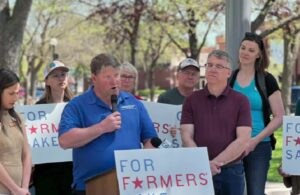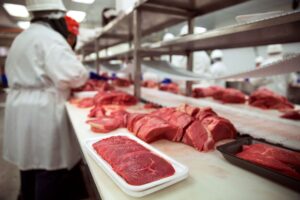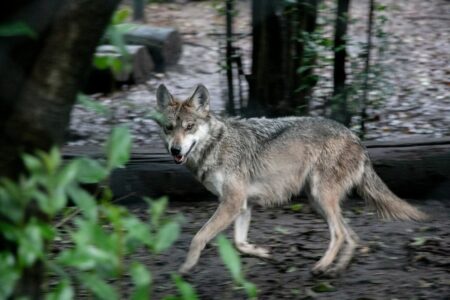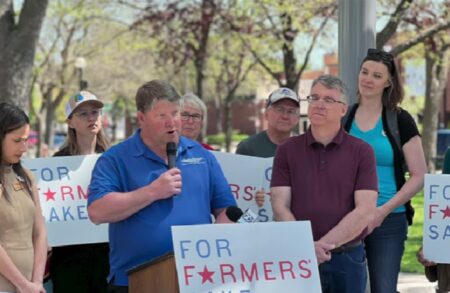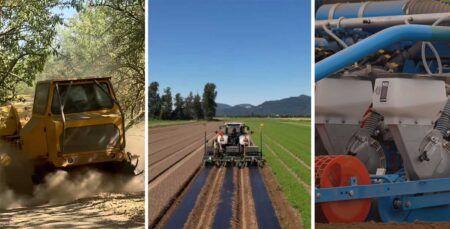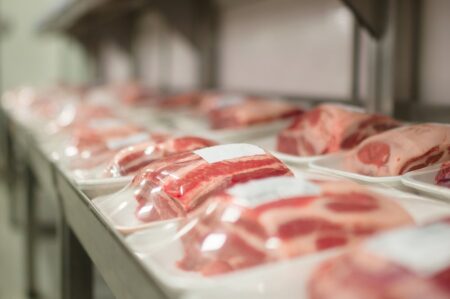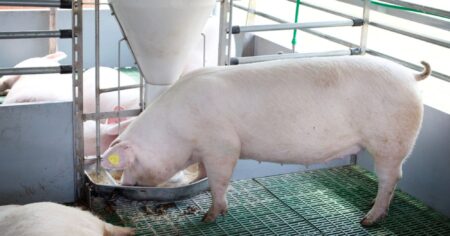The U.S. cattle market ended last week in turmoil as futures tumbled in reaction to President Donald Trump’s comments about a plan to lower beef prices, followed by a weekend statement that the U.S. could import beef from Argentina.
The remarks sparked immediate volatility, sending both live and feeder cattle contracts sharply lower and leaving producers and traders searching for clarity.
Trump first made headlines on Thursday when he told reporters in the Oval Office that beef prices were “higher than we want it” and that his administration had a plan to bring them down “pretty soon.”
Trump: “The only price we have that’s high is beef, and we’ll get that down. And one of things we’re thinking about doing is beef from Argentina.” pic.twitter.com/I32e151KU8
— Aaron Rupar (@atrupar) October 20, 2025
The lack of details surrounding this “deal” created uncertainty across the livestock sector. When markets opened on Friday, traders took a defensive stance, and the sell-off quickly accelerated. By the close of trade, live cattle futures had fallen between $3.70 and $7.22, with December contracts down $6.05 to $241.825 and February down $6.725 to $242.825. Feeder cattle were hit even harder, with October contracts dropping $7.725 to $371.950 and November and January locking limit down at losses of $9.25.
Despite the futures collapse, cash cattle held mostly steady around $240 to $241 for the week, suggesting that panic was largely speculative.
The U.S. Department of Agriculture’s Friday afternoon report showed boxed beef prices strengthening, with Choice boxes up 66 cents to $366.77 and Select up $1.34 to $350.27, keeping the Choice-Select spread at $16.50. Federally inspected slaughter for the week reached 567,000 head, up 20,000 from the previous week but 40,000 below the same period last year.
The market reaction intensified over the weekend when Trump, speaking aboard Air Force One, said that one of the ways to lower beef prices could be to “buy some beef from Argentina.”
The statement followed reports that his administration is working on a financial package to support Argentina’s struggling economy ($20 billion has already been authorized, and there are talks to double that), a move that has already sparked discontent among American farmers and lawmakers who view such assistance as undercutting U.S. agriculture.
Analysts say Trump’s comments triggered algorithmic trading programs that amplify price swings on headlines. Elliot Dennis, a University of Nebraska-Lincoln livestock economist, told The Fence Post that the drop was “due in large part to algorithm trading from the Trump headline on doing something big for the beef industry.” He added that the market was already overbought and vulnerable to correction, with traders looking for an excuse to take profits after weeks of record highs.
Argentina exports premium steaks for its own domestic market and for discerning export markets, but for mass export into the U.S. the economics and infrastructure tend to favor frozen, boneless, leaner cuts. The U.S. market often demands high volumes of consistent, large-scale supply, and Argentina’s export trade has historically oriented toward frozen blocks and lean cuts for major buyers (especially China) rather than a flood of boutique steak cuts.
Despite this, producers and brokers on the ground agreed that the president’s remarks likely spooked the market. South Dakota broker Rich Blair said that while the futures plunge was real, the fundamentals of the cattle market remain sound.
“We traded fed cattle $5 higher than last week so far,” he noted. Still, he cautioned that such sharp moves highlight the nervousness surrounding historically high cattle prices.
The U.S. Cattlemen’s Association issued a statement urging policymakers to consider the broader context of production costs before making public promises about lowering prices.
“The cost of producing beef today is accurately represented in the consumer markets where it is sold,” said USCA President Justin Tupper. “Ranchers are facing historic highs for feed, fuel, labor, and land — and those costs have risen far faster than beef prices on grocery shelves.” He warned that speculative or politically charged comments can cause unnecessary market volatility, jeopardizing the stability ranchers rely on to plan and invest in their operations.
Many in the industry are also wary of renewed talk of imports. With the U.S. cattle herd at a 75-year low, producers have worked through years of drought and inflationary pressure to maintain supply. Critics of increasing beef imports argue that while Trump’s intentions may be to address consumer concerns, short-term moves like this could harm long-term domestic production.
The fundamentals of the cattle market remain rooted in tight supplies and strong consumer demand. Per capita beef consumption has reached a 40-year high. Economists caution that herd expansion will take years, not months, meaning any significant increase in beef availability from domestic sources will be slow to materialize.



